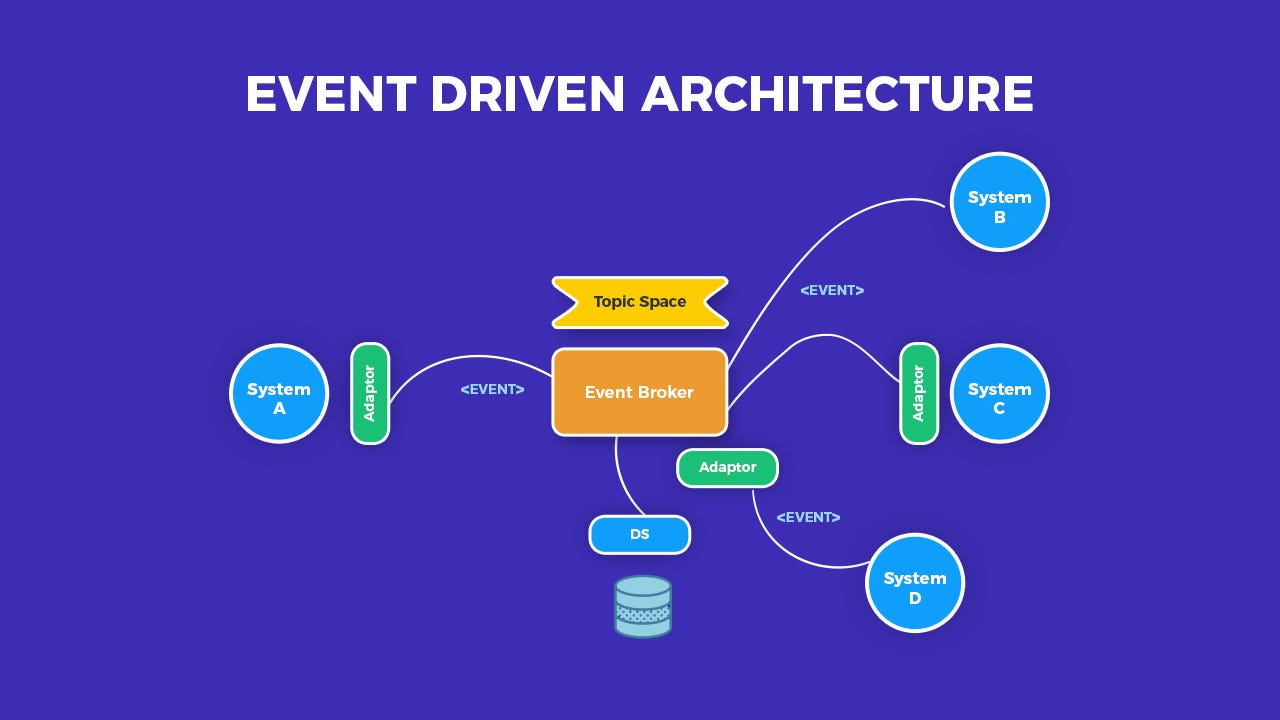In the fast-evolving world of software design, Event-Driven Architecture (EDA) stands out as a paradigm that enables systems to respond in real-time to dynamic business demands. This architecture, built around the notion of events triggering actions, has become a foundational model for applications requiring high scalability, responsiveness, and modularity. In this article, we explore what EDA is, its key components, benefits, and why it’s becoming a go-to approach in modern system design.
What is Event-Driven Architecture?
Event-Driven Architecture is a design pattern where components within a system communicate through events. An event signifies a change in state or the occurrence of an action, such as a user placing an order or a sensor detecting movement. These events are captured, processed, and often stored for subsequent use.
At its core, EDA consists of three primary components:
- Event Producers: These generate events based on actions or state changes. For example, an e-commerce application’s checkout system might produce an event when a purchase is made.
- Event Brokers: These act as intermediaries that route events from producers to consumers. Technologies like Apache Kafka, RabbitMQ, or AWS EventBridge often serve this role.
- Event Consumers: These entities respond to the events, taking actions such as updating databases, sending notifications, or triggering workflows.
Key Benefits of EDA
- Scalability: By decoupling producers and consumers, systems can scale independently, meeting demand fluctuations efficiently.
- Real-Time Processing: EDA’s asynchronous nature ensures rapid responses to events, making it ideal for use cases like fraud detection or IoT data processing.
- Flexibility: The loosely coupled design allows easy integration of new features or services without disrupting existing workflows.
- Fault Tolerance: With appropriate designs, such as replayable event logs, EDA ensures resilience against system failures.
- Improved Modularity: The pattern encourages breaking systems into manageable and independent components.
Use Cases of Event-Driven Architecture
EDA finds applications across industries:
- Data Analytics: Streaming analytics platforms use EDA for real-time data processing.
- Cloud Solutions: Dynamic scaling of resources based on usage metrics.
- Cybersecurity: Detecting and responding to threats in real-time.
- Chatbots: Triggering responses based on user queries or external system events.
- CI/CD Pipelines: Automated deployments triggered by repository updates or test completions.
Challenges and Considerations
While EDA offers numerous advantages, it comes with challenges like ensuring event consistency, managing event storms, and implementing effective monitoring. Designing idempotent consumers (ensuring that repeated processing of an event doesn’t have unintended consequences) is critical to addressing many of these concerns.
Future of Event-Driven Architecture
As businesses continue to prioritize real-time responsiveness, EDA’s relevance will only grow. With advancements in event streaming platforms and serverless technologies, adopting EDA is becoming more accessible and cost-effective.
Conclusion
Event-Driven Architecture empowers organizations to build systems that are not only responsive but also resilient and scalable. Whether it’s improving customer experiences or optimizing backend operations, EDA is shaping the future of software development.

